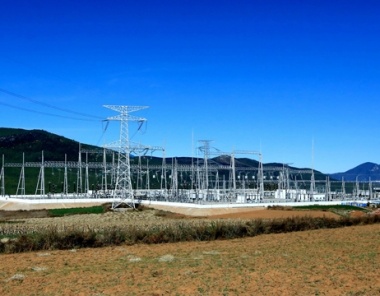Power facility
2025-07-11
The deployment of anti-drone systems for the security of power facilities is becoming increasingly important due to the growing threat posed by unauthorized drones. These systems are designed to detect, track, and neutralize drones that may pose a risk to critical infrastructure. Here are some key aspects and technologies involved in implementing anti-drone systems for power facility security:
1.Detection Technologies:
Radar Systems: Utilize radar to detect drone movements in the vicinity of the facility. These systems can cover large areas and provide real-time tracking.
Radio Frequency (RF) Sensors:Detect the communication signals between the drone and its operator. RF sensors can identify the type of drone based on its signal signature.
Optical Cameras:High-resolution cameras equipped with advanced imaging technology (such as infrared) can visually identify drones and track their movements.
Acoustic Sensors:These sensors detect the sound produced by drones, helping to identify their presence in noisy environments.
2.Tracking and Identification:
Machine Learning Algorithms:Advanced algorithms can analyze data from various sensors to distinguish between benign and potentially harmful drones.
Integration with Security Systems:Anti-drone systems can be integrated with existing security infrastructure, such as CCTV cameras and alarm systems, to provide a comprehensive security solution.
3.Neutralization Methods:
Jamming:RF jamming can disrupt the communication between the drone and its operator, causing the drone to either land or return to its point of origin.
Drone Capture Systems:Using nets or other mechanical means to physically capture a rogue drone. This method is less disruptive than jamming.
Directed Energy Weapons: Some systems use lasers to disable drones by damaging their electronics or propellers, rendering them inoperable.
Electronic Takeover: Some advanced systems can take control of a drone and safely land it, allowing for investigation.
4.Regulatory Compliance:
Ensure that any anti-drone measures comply with local and national regulations regarding airspace and privacy. This may involve obtaining necessary licenses or permits for the use of jamming or other countermeasures.
5. Operational Protocols:
Develop clear protocols for responding to detected drones, including escalation procedures, communication with law enforcement, and coordination with facility security personnel.
Training staff on how to operate the anti-drone systems and respond effectively to drone threats.
6. Risk Assessment:
Conduct a thorough risk assessment to identify vulnerabilities in the facility and evaluate the potential impact of drone incursions.
Assess the likelihood of drone threats based on the facility's profile, location, and previous incidents.
7. Public Awareness and Engagement:
Engage with local communities and drone operators to promote responsible drone use and establish no-fly zones around critical infrastructure.
Public awareness campaigns can help inform the community about the risks associated with unauthorized drone flights near power facilities.
8.Continuous Monitoring and Upgrades:
Regularly update the anti-drone systems to adapt to evolving drone technologies and tactics.
Continuous monitoring and assessment of the security environment are essential to maintaining effective defenses.
Conclusion:
Implementing an effective anti-drone system for power facility security involves a multi-faceted approach that combines advanced technologies, regulatory compliance, and operational protocols. As the threat landscape evolves, power facilities must remain vigilant and proactive in their security measures to protect critical infrastructure from potential drone-related incidents.
← Prev Post
Next Post →
Related Info










